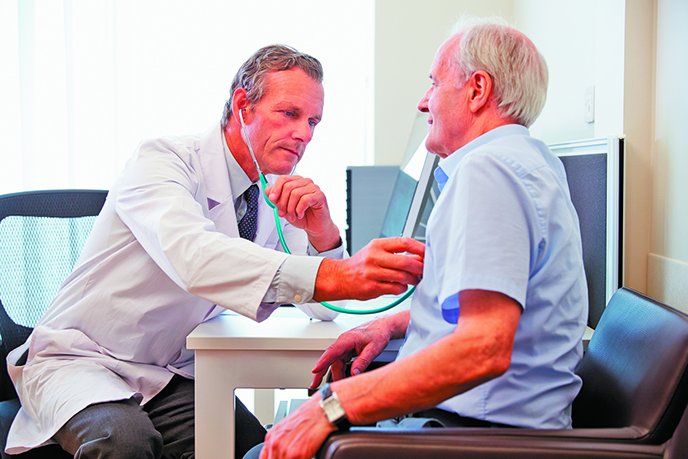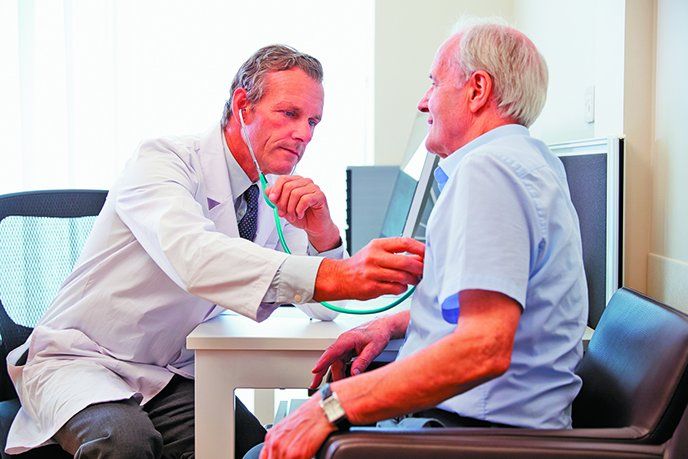Dreamstime.com

Seeing you’re down several pounds or finding your clothes are fitting looser may sound like a good thing – but not when you aren’t trying to lose weight. Unwanted weight loss is of special concern in aging since it could point to an undiagnosed illness, leave you prone to infections or decrease your independence.
“When people unintentionally lose weight as they age, it can have far-reaching effects,” says Kelly Kane, MS, RD, director of nutrition and business operations at the Frances Stern Nutrition Center at Tufts Medical Center. “Unneeded weight reduction contributes to muscle loss, which could impact something as simple as handgrip strength, making it difficult to open jars of food, or it could make you unsteady on your feet, increasing risk of falling and breaking a bone.”
Find Out Why:
Work with your doctor to identify the cause of unwanted weight loss and possible solutions. Cancer is a common reason, accounting for 19 to 36% of cases of unintentional weight loss in older adults. Chronic diseases, such as rheumatoid arthritis and Parkinson’s disease, also may underlie unwanted weight loss. Digestive diseases, alcohol-related disease, depression and dementia may provoke weight loss, too.
“Some people may feel they’re eating the same amount as usual but still losing weight. That could be a sign they’re burning more calories without realizing it, which can happen in conditions such as congestive heart failure and chronic obstructive pulmonary disease,” Kane says. “In the first case, the heart is working harder, and in the second case the lungs are working harder, and that extra effort takes more energy.” An overactive thyroid gland (hyperthyroidism), if untreated, also may lead you to burn more calories than expected.
Another challenge may be poor appetite. “People commonly have decreased senses of smell and taste with age, in addition to decreased thirst, so eating just may not be as enjoyable,” Kane says. Plus, over 250 prescription medications can alter sense of taste and/or smell, such as some blood pressure medications and antibiotics. Some medications can cause dry mouth, constipation or nausea, all of which can dampen appetite, too. Your doctor or pharmacist may have suggestions to ease such issues. Being open to new types of food preparation, spices, eating venues and dining companions may help combat poor appetite, too.
Putting Weight Back On:
Even when food doesn’t seem to taste as good as it used to, eating is still important for good health,” Kane says. “It may help to think of eating as a discipline, just like exercise. Your body needs the nutrients in food.”
Certain strategies can make eating more doable. Try to eat regularly-scheduled meals or snacks every 3 to 4 hours. “Going longer than that without eating can make it difficult to get enough food in,” Kane says. “It doesn’t have to be a big meal. For example, it could just be toast with peanut butter or an egg with juice.”
Although it may be tempting to load up a big plate of food to encourage eating more, this can be overwhelming and not helpful. “If you put a more manageable portion of food on a smaller plate and eat it all, that can provide a sense of accomplishment,” Kane says.
Make every bite count, too. “Use strategies opposite to what are often advised to lose weight,” Kane says. “Don’t focus on choosing low-fat options, especially if it’s healthy fat. For example, dip apple slices in peanut butter or use extra mayonnaise in tuna salad. Such approaches add more calories without increasing the volume of food much.”
Social Factors:
If a sudden change in living situation or loss of a spouse has made it challenging to eat well, consider sharing meal times with neighbors or family on a regular basis, coupled with a mutually enjoyable activity, such as discussing a book or movie. If transportation to the store is an issue, check if a supermarket will deliver for a small fee. Consider buying more frozen foods to avoid waste and ensure a steady food supply when you can’t shop.
Most importantly, tap into what you enjoy eating and choose nutritious foods that sound good to you.
To learn more: Appetite, October 2016
To boost calories and nutrition, try these ideas:
– Choose hearty, dense whole-wheat breads and top with nut butter, hummus or mashed avocado.
– Eat more starchy vegetables, such as corn, sweet potatoes, peas, beans, potatoes and winter squash.
– Add shredded cheese to vegetables, casseroles, scrambled eggs, potatoes and soups.
– Eat hearty, thick soups, such as minestrone or bean.
– Eat more dense (less watery) fruits, such as bananas, pineapple and dried fruit (raisins, dried apricots).
– Drink nutritious beverages, such as milk, 100% fruit juice or homemade smoothies.
– Add nuts and seeds to cereal, yogurt, stir-fries and salads, or simply eat them as snacks. If chewing is difficult, enjoy nut and seed butters.
– Prepare foods with milk instead of water, such as hot cereal and condensed soups.
– To ensure adequate protein intake, regularly include meat (ground, if chewing is difficult), chicken, eggs, salmon, tofu, yogurt, cheese and similar options.
– Use generous amounts of vegetable oil and condiments, such as mayonnaise and guacamole.
– Enjoy desserts that offer nutrition, such as apple crisp or oatmeal raisin cookies.
– Use bottled liquid nutrition supplements only if necessary, and preferably as a snack, not a meal replacement. These products dont contain the full array of nutrients and fiber found in whole foods, and sugar is typically one of the top ingredients.





















